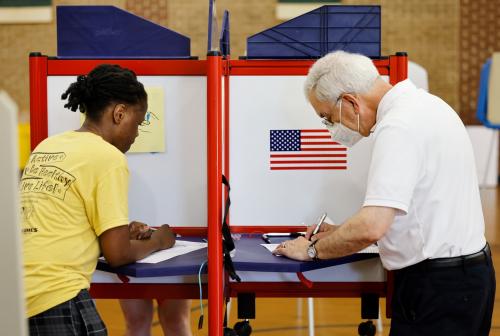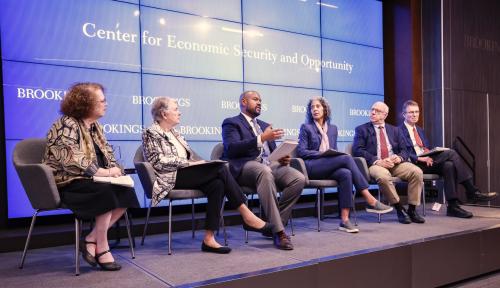Introduction
Over the last four decades a conventional wisdom about Cuban-Americans holding extreme and almost rabid support for Republicans has evolved. In fact, few groups are as loyal to their presidential candidates as Cuban-Americans are to Republicans—in the last three elections they supported GOP presidential candidates at greater than a 70% clip—a rate rivaled only by white Evangelical Protestants who show similar levels of support (Greenberg 2004). Only African-Americans, who support Democrats at rates exceeding 90%, are more loyal to their party. Moreover, with respect to American foreign policy, the community has overwhelmingly opposed dialogue, travel by American tourists, and trade with Castro’s Cuba. Driven in large part by media portrayals of Cuban-American’s activism on questions of foreign policy toward Cuba, the Elian Gonzalez saga, and Republican officials’ support of these positions, the Cuban community is commonly perceived as a bastion of unwavering conservatism that takes a hard line against Castro.
So pervasive is this stereotype that over the last few years the media have portrayed a new contrasting view in which Cuban-American voters are “up for grabs” and much more likely to vote Democratic. This narrative is perhaps most clearly illustrated by the titles of the articles describing the purported shift, such as “Neither Bloc nor Lock” (Goodnough 2004), “Obama Charts a Path through Divided Cuban Vote” (Silva 2007), and “Will Little Havana go Blue?” (Reiff 2008). Like most stereotypes, however, these contain only an element of truth.
The evidence we present in this paper suggests that both views are incorrect. The overwhelming homogeneity among Cuban-American voters in supporting Republicans, the travel ban, and the embargo, conceals much greater opinion diversity on other, especially social, issues. Moreover, in the pages that follow, we show that on several of these issues the community is not only more liberal than commonly thought, but quite liberal in absolute terms as well. Finally, we also demonstrate that on social issues, this liberalism is especially pronounced among women, an often overlooked group that comprises a solid majority of the Cuban-American electorate. Understanding these nuances in Cuban-American attitudes provides great leverage for understanding what the future holds for this important voting bloc.
Perhaps the most important nuance for understanding the prospects for Cuban-American’s political behavior is to distinguish between the views of Cuban-American voters and the Cuban-American community. While newer, post-Mariel (1980) arrivals, now constitute just under half of South Florida’s Cuban-American voting age community (U.S. Census 2000), they constitute only about 1 in 8 Cuban-American voters.[1] As polls show that these more recent immigrants disproportionately hold supportive positions toward engagement on U.S. foreign policy toward Cuba, the failure to recognize the difference between the community as a whole and those who vote may lead to mistaken inferences about the effects of attitude and demographic change on Cuban-American’s political behavior.[2]
Several explanations for the differences between the community and the voting electorate seem plausible. First, owing to the “wet foot dry foot” policy, more recent Cuban immigrants are less likely to be naturalized citizens, a fact that precludes their inclusion in the electorate. The 2000 U.S. Census reports that only 29.3% of those immigrating after 1980 are naturalized citizens as compared with the 88% of those who immigrated before 1980. Second, recently naturalized citizens are more likely to be of lower socio-economic status, a characteristic that is associated with decreased levels of political participation (e.g., Campbell et al. 1960; Verba, Schlozman, Brady 1995). Finally, these recent immigrants are among those who were least likely to have exhibited a history of political activism in Cuba, an important fact since studies increasingly show that political participation is a learned trait (Verba, Schlozman, Brady 1995). In a 2004 pilot study of recently arrived Cubans, for example, more than 85% of subjects demonstrated mistrust toward political systems and government institutions (Gomez et al. 2004). Regardless of their source, the opinion differences between the community and the voting electorate have potentially significant implications for our understanding of the voting behavior and attitudes of Cuban-Americans in South Florida.
[1] This figure (46.5%) is calculated by taking the population of the community that identifies as Cuban and calculates the proportion that emigrated from Cuba after 1980. It differs slightly from the more commonly cited estimate of 51%, that is obtained using only the foreign born Cuban population as the denominator.
[2] Further consider that voters represent an even more refined highly motivated subset of the electorate (those eligible to vote), who bear the costs associated with voting. Consequently, except where noted, the data described in this paper pertain to the Miami Dade County electorate and are based on data from the 2004 Exit Poll of Voters in Miami Dade County (Bishin and Stevens 2004).



Commentary
What to Expect from the Cuban-American Electorate
August 31, 2008